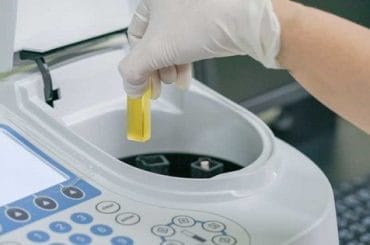This post is also available in:
Español
Português
Identifying and appreciating the diverse flavors and aromas in beer not only enhances the drinking experience but also provides deeper insight into brewing processes and the unique characteristics of each beer style.

At a more advanced level, many of these characteristics can be trained using aroma and flavor kits that isolate the most common qualities found in beer, from incomplete fermentation to oxidation and contamination.
This article aims to show ways you can train these skills at home using common ingredients or elements, learning to identify them in everyday environments.
For its content, we based our work on the 25 descriptors from the training kit by Siebel Institute of Technology, without requiring malt or hops—though having some beer on hand might be useful.
Contenido
- 1. Acetaldehyde
- 2. Acetic Acid
- 3. Almond
- 4. Bitter
- 5. Butyric Acid
- 6. Caprylic Acid
- 7. Sour and Buttery (Contaminated)
- 8. DMS (Dimethyl Sulfide)
- 9. Diacetyl
- 10. Earthy
- 11. Ethyl Acetate
- 12. Ethyl Hexanoate
- 13. Geraniol
- 14. Grainy
- 15. Spicy and Banana
- 16. Indole
- 17. Isoamyl Acetate
- 18. Isovaleric Acid
- 19. Lactic Acid
- 20. Lightstruck
- 21. Mercaptan
- 22. Metallic
- 23. Wet Cardboard
- 24. Spicy
- 25. Vanilla
- Final Thoughts
- Recommended
1. Acetaldehyde
Acetaldehyde is a fermentation byproduct that develops aromas reminiscent of green apple varieties or freshly cut grass.
To familiarize yourself with this compound, purchase a green apple (preferably Granny Smith), wash it, and slice it thinly right before deeply inhaling its aroma. Then chew an unpeeled piece to capture its acidity and freshness.
With clean hands, cut a handful of fresh grass, rub it, and inhale deeply to identify its herbal, fresh notes. Optionally, wash a handful, crush it, and taste a small sample on your tongue.
You can also experiment by sniffing fresh green leaves from your garden or fresh cucumber peel for similar nuances.
2. Acetic Acid
Acetic acid results from ethanol oxidation by acetic acid bacteria and is the characteristic aroma of vinegar.
To train your palate, pour a small amount of white vinegar into a glass, bring it close to your nose, and begin inhaling gently to perceive its intense, pungent aroma.
Then take a small sip and hold the liquid in your mouth for a few seconds before swallowing to experience its marked acidity.
Optionally, you can dilute it in various proportions of purified water to quantify its levels or use apple cider vinegar or balsamic vinegar to explore other nuances.
3. Almond
Almond aromas and flavors come from compounds like benzaldehyde, a product of fatty acid oxidation, developing aromas and flavors similar to almonds and marzipan.
Obtain a handful of fresh, unsalted almonds, smell them, and slowly chew a couple to familiarize yourself with their aromas and flavors. Optionally, you can use almond extract to intensify the experience.
Then, purchase a piece of high-quality marzipan, smell it deeply, and slowly chew a small piece to become acquainted with its sweet, caramelized flavor profile.
4. Bitter
Bitterness in beer primarily comes from alpha acids (humulones) present in the hops used during brewing.
Get a fresh grapefruit, wash it, and cut it into quarters. Smell the freshly cut pulp and try a small piece of the inner white peel (albedo) to experience its bitterness.
You can also prepare a cup of black coffee without sugar, inhale it immediately, and take a sip to feel its bitter, roasted notes.
Optionally, you can try chewing fresh dandelion leaves for a more intense experience.
5. Butyric Acid
Butyric acid is produced by anaerobic bacteria during fermentation, developing an odor similar to baby vomit or spoiled food.
To experience it, leave a piece of butter outside the refrigerator in a warm place for one or two days until it begins to decompose.
As time passes, smell the rancid butter to identify how it develops its characteristic putrid odor.
Optionally, place a small amount on your tongue, feel it, and spit it out. You can also try this with sour milk or rotten cheese.
6. Caprylic Acid
Caprylic acid is generally produced due to yeast autolysis and develops soapy, fatty aromas resembling candle wax or tallow.
To explore it, obtain a piece of solid coconut oil (preferably unrefined) and smell it to familiarize yourself with its soapy, fatty aroma.
Then take a small amount and chew it to feel its greasy texture and waxy flavor as it melts in your mouth.
You can also try smelling a beeswax candle or a piece of raw animal fat to capture similar nuances.
7. Sour and Buttery (Contaminated)
Typically caused by bacteria like Lactobacillus or Pediococcus, this contamination results in sour, buttery flavors similar to spoiled milk or butter.
To experience it, leave some milk outside the refrigerator in a glass jar for a couple of days until you identify its sour aroma, then taste a small amount of liquid to notice its acidic flavor and thick texture.
Additionally, smell some fresh natural butter to identify that creamy, slightly sweet aroma, then taste a small piece until it melts in your mouth.
You can also use unsweetened plain yogurt or kefir to explore additional nuances.
8. DMS (Dimethyl Sulfide)
Derived from the breakdown of S-methylmethionine (SMM) during malting, which during brewing develops an aroma similar to cooked corn and other vegetables.
To easily identify it, open a can of sweet corn and smell its contents to capture its sweet, slightly sulfurous aroma.
You can also steam or boil some broccoli without salt, smell it while cooking, and then taste a piece to identify its vegetal and sometimes sulfurous flavor.
You can also try smelling a can of peas or preserved asparagus to capture other DMS nuances.
9. Diacetyl
Diacetyl is a fermentation byproduct resulting from the oxidation of alpha-acetolactate, developing an aroma and flavor similar to melted butter or butterscotch.
To identify it, melt some butter in a pan over low heat and gradually smell it to capture the development of its creamy, sweet aroma, tasting a small amount without burning yourself.
Additionally, obtain high-quality butterscotch candies, inhale them, and taste them to experience their buttery sweetness combination.
You can also try smelling buttered popcorn or some margarine, which uses diacetyl as a flavoring.
10. Earthy
The earthy quality in beer is generally produced by contaminated water usage and recalls the aroma of soil when it becomes moist.
To experience it, go to your garden after rain, collect a handful of damp soil, and inhale deeply to identify its earthy, musty aromas.
You can also try accessing a damp basement, smelling fresh mushrooms, or even unwashed raw potatoes to capture other similar nuances.
11. Ethyl Acetate
Ethyl acetate forms from the reaction of ethanol and acetic acid during fermentation, developing solvent-like or nail polish remover aromas.
Obtain some acetone-based nail polish remover, open the bottle in a well-ventilated area, and carefully smell it to identify its intense chemical aroma.
You can also use a permanent marker or some rubbing alcohol to continue exploring this aroma in depth.
12. Ethyl Hexanoate
Ethyl hexanoate is an ester produced by the reaction of hexanoic acid and ethanol during fermentation, developing aromas and flavors similar to anise, sweet apple, pineapple, and/or licorice.
Obtain anise or licorice seeds, smell them to capture their sweet, spicy aroma, then chew a handful and a small piece to identify their characteristic flavors.
You can also try with a sweet red apple, a piece of pineapple peel, fennel tea, or anise liqueur to deepen this experience.
13. Geraniol
Geraniol is a terpene compound present in some hop varieties with floral aromas, also found in geraniums, which you can obtain fresh from a nursery or florist, inhaling and identifying their floral, slightly citrusy aromas.
You can also use geranium essential oil or smell fresh roses to capture other nuances.
14. Grainy
The grainy aroma comes from phenolic compounds and tannins in the grains used for brewing, recalling nut shells.
Obtain some fresh walnuts, crack them, and separate the shells. Then smell them to identify their woody, earthy aromas, chewing a small piece to experience their flavor.
You can also smell and taste wheat bran or sunflower seed hulls to explore this aroma.
15. Spicy and Banana
These are characteristic aromas of Hefeweizen-style beer, resulting from fermentation of certain esters and phenols that develop spicy and banana flavors and aromas.
Get a ripe banana and cut it into pieces to release its sweet aromas, then taste a piece to enjoy its creamy flavor.
Then obtain whole cloves, identify their spicy, pungent aroma, then chew or crush a clove to experience its flavor, finally mixing it with mashed banana.
16. Indole
Indole is produced by bacterial decomposition of amino acids like tryptophan and develops aromas recalling a farm or animal pen.
When possible, collect some fresh manure and smell it in a ventilated area to recognize its fecal, earthy aroma.
You can also approach and smell composted leaves or sterilized manure used in mushroom cultivation to capture this odor.
17. Isoamyl Acetate
Isoamyl acetate is an ester formed by the reaction of isoamyl alcohol and ethanol during fermentation, developing aromas and flavors similar to banana and sweet pears.
Obtain fresh, ripe pears, slice them thinly, smell them to identify their floral, fruity aromas, then taste them to perceive their sweet, juicy flavor.
You can also try banana or pear-flavored chewing gum to capture similar nuances.
18. Isovaleric Acid
Isovaleric acid comes from fatty acid oxidation and decomposition of old hops, developing cheesy or sweaty clothing aromas and flavors.
Acquire a piece of blue cheese or Roquefort and smell it to capture its intense, slightly fetid aromas; then taste a small piece to identify its strong, salty flavor. Also try with a piece of aged Parmesan cheese.
Optionally, you can separate your sweaty socks after exercising and bring them close to a heat source until they begin releasing vapors to capture some intense nuances of this aroma.
19. Lactic Acid
Produced by lactic acid bacteria during fermentation, lactic acid has a sour aroma and flavor reminiscent of spoiled milk, though easily identifiable in plain unsweetened yogurt or kefir, which also allow you to explore additional nuances.
20. Lightstruck
Resulting from degradation of iso-alpha-acids in the presence of UV light, light exposure produces an unpleasant skunky or cat urine aroma.
To experience it directly, leave a beer in a clear container exposed to sunlight for several hours, then taste it to identify the effect, exploring various nuances resulting from exposing different beer styles to light.
21. Mercaptan
Mercaptan is a sulfur derivative produced by protein degradation that develops aromas similar to sewage or drains.
To experience it, crack an egg into a bowl and leave it at room temperature for a few hours until it begins decomposing, carefully smelling its development to identify its intense, unpleasant aroma.
You can also try smelling some spoiled garlic to capture similar nuances.
22. Metallic
May come from metallic contaminants in brewing equipment or water, recalling aromas and flavors of copper, tin, or blood.
One simple option is to obtain a rusty nail and smell it to identify its characteristic metallic aroma.
To experience its flavor, you can prick your finger with a sterilized needle and taste a drop of your own blood. You can also identify it by smelling a piece of aluminum foil or old copper coins.
23. Wet Cardboard
This is the result of oxidation of fatty acids in beer and can be reproduced by wetting a piece of cardboard with water, letting it sit for a couple of hours, and smelling it to identify its damp, slightly musty aromas.
You can also use kraft paper or an old cardboard box stored in a cellar.
24. Spicy
Spicy aromas come from phenolic compounds like eugenol, present in hops and also in some common spices.
Obtain whole cloves, black peppercorns, cinnamon, and nutmeg, smell them to identify their aromas, and chew some whole or crushed pieces to experience their flavor.
25. Vanilla
The characteristic phenolic compound of vanilla that develops sweet, floral aromas, similar to custard powder and dessert essences.
Obtain high-quality vanilla extract, smell it to notice its sweet, floral aroma, then taste a few drops diluted in water to identify its sweet flavor and aromatic intensity.
Ideally, though quite expensive, you can use vanilla beans or vanilla bean powder to intensify the experience.
Final Thoughts
Training your senses for beer tasting and evaluation using common ingredients is an excellent way to deepen your appreciation of this beverage.
By identifying and understanding the various compounds and aromas present in beer, you’ll not only improve your ability to detect and describe these flavors, but you’ll also enrich your experience and understanding of their origins and development.
No se encontraron productos.
Recommended
- Recommended: History and origins of glass bottles and their evolution
- 5 foolproof marketing strategies for craft breweries







